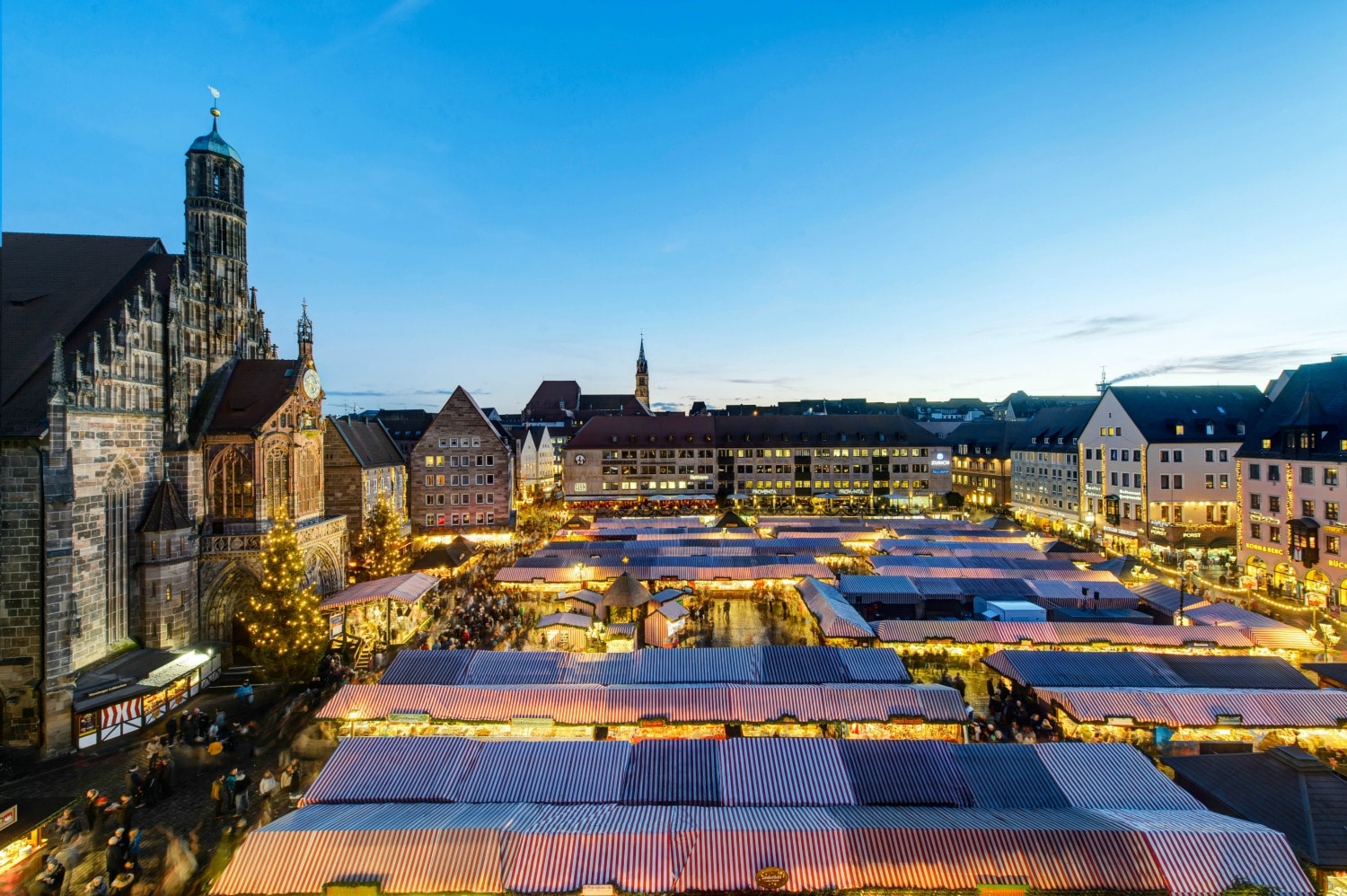Imperial power, World War II tension, outstanding artistic achievements and great human tragedies … Nuremberg has mirrored German history since the Middle Ages. For some, the name of the city evokes images of Albrecht Dürer, sausages and the Christmas market; for others, the prosecution of Nazi war criminals during the “Nuremberg Trials”. Whatever springs to mind, Bavaria’s second-largest metropolis is an energetic place where the entertainment is endless and the beer is red. Its 500,000 inhabitants enjoy a high quality of life and visitors will be dazzled by the harmonious mix of modern and historical architecture.
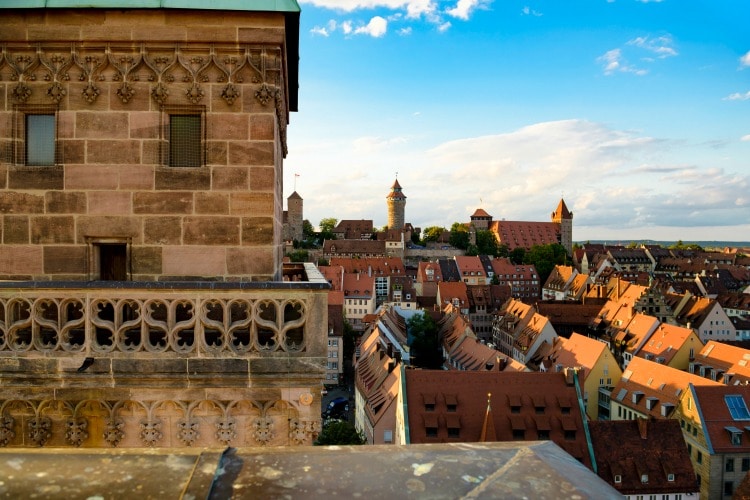
Museums and More
For centuries, Nuremberg was the undeclared capital of the Holy Roman Empire and the preferred residence of many German kings. Full of life and architectural wonders, it was also a magnet for famous artists, and one of the most innovative of all, Albrecht Dürer (1471-1528), was born here. Like Dürer’s paintings in the Germanisches Nationalmuseum, the largest museum of German art and culture, works like the “Angelic Salutation”, Veit Stoss’ depiction of the Annunciation which hangs in St. Lorenz Church, and Adam Kraft’s “Stations of the Cross“ in the St. Johannis quarter are just two examples bearing witness to the illustrious past of the town.
The city is dominated by an enormous castle complex, the Kaiserburg, whose construction began in 1140 and was continually expanded until the 17th century. Highlights include the renovated residential wing (Palas) with the lavish Knights’ and Imperial Hall, a Romanesque double chapel and an exhibit of the inner workings of the Holy Roman Empire.
Nuremberg’s many museums offer insights into local history, the life and work of Dürer or the daily existence in a Patrician household. The city‘s long tradition as a place of toy production and industrial innovation is displayed in the Toy Museum and Museum of Industrial Culture while modern art and design await at the Neues Museum which showcases contemporary art and design from the 1950s onwards.
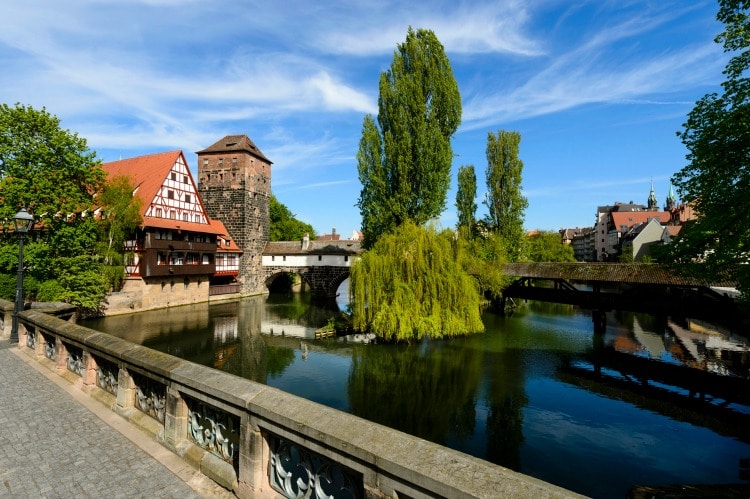
Events for everyone
Many institutions take part in the extremely popular “Blaue Nacht”, the long night of museums which takes place every year in May. Of course, in a city with half a million inhabitants, exciting events are happening year round.
From International Organ Week, the largest and oldest festival for sacred music in Europe to the popular “Rock im Park” and the free “Bardentreffen” (Bards‘ meeting), the range of musical events are as interesting as they are different. In summer, two open-air classical concerts by the Nuremberg Symphony Orchestra lure more than 100,000 music fans to picnic in Luitpoldhain Park. A little later in Autumn, the Altstadtfest, a festival held in the Old Town, provides visitors with fun and entertainment including a parade, traditional water jousting, and fairground attractions.
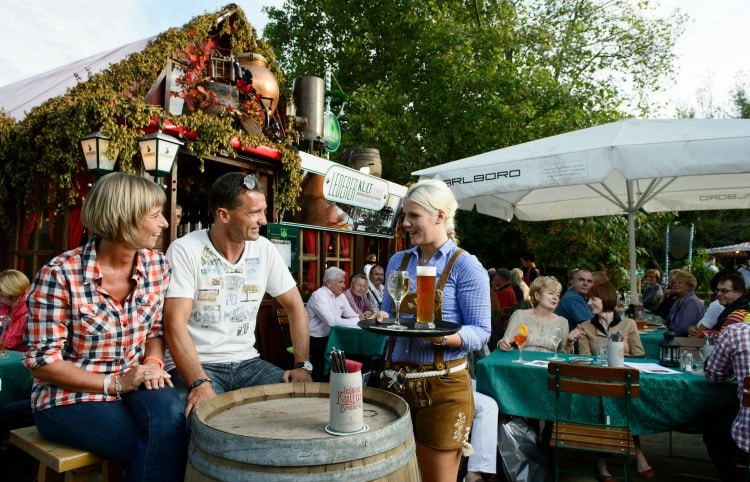
Car racing buffs can enjoy high-speed excitement at the Norisring Speed Weekend and watch the drivers of the DTM (German Touring Car Masters) race around the curves of the only German urban circuit.
The grand finale in the city’s events calendar is probably the most famous Christmas market in the world, Nuremberg‘s Christkindlmarket. Two million visitors come each year to enjoy the tempting aromas of mulled wine, sweet roasted almonds, Nuremberg sausages and gingerbread, joining in a tradition that’s more than 400 years old.
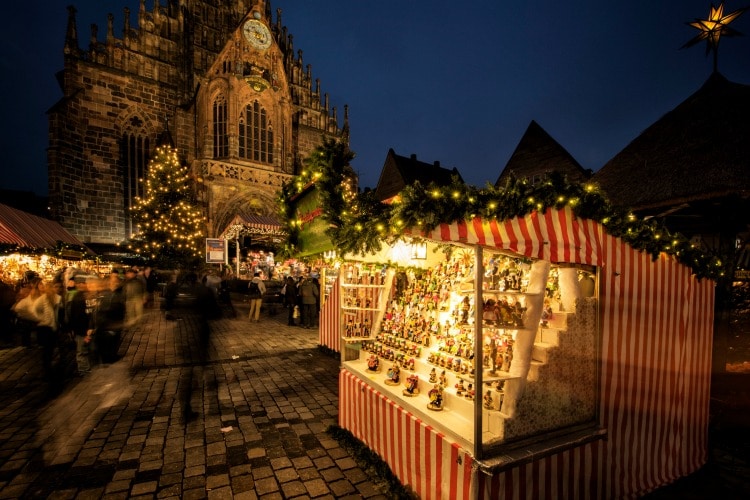
A Culinary Triad
Size really matters when it comes to the Nuremberg Bratwurst which must be no longer than 9 centimeters (3.54 inches) and no weightier than 25 grams (0.88 ounces). The small and thin pork sausage, which has been around for over 700 years, tastes good any time of the year – whether served three-in-a-bun in the colder months as “Drei im Weckla” in one of the historical sausage kitchens or in a shaded beer garden during summer.
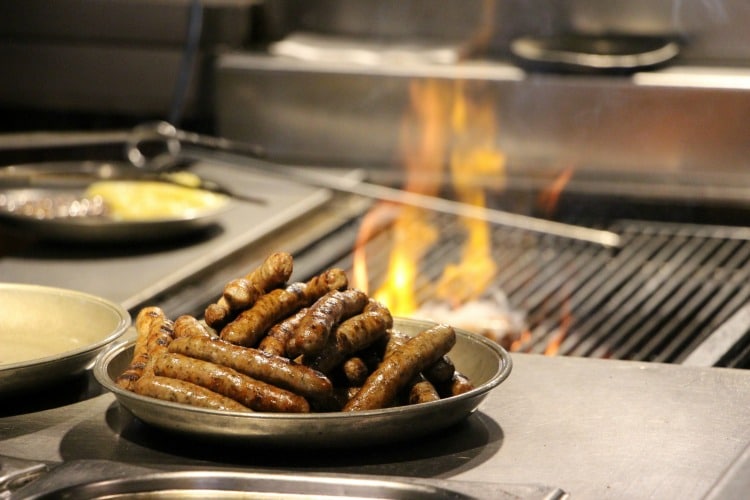
Nuremberg’s other culinary delight, the Lebkuchen or gingerbread, were first baked by Franconian monks as early as the 14th century. The city’s fame as the original home of it was due to Nuremberg’s close proximity to ancient spice and trading routes which allowed bakers access to exotic spices like cinnamon, cloves, cardamom and nutmeg, along with almonds. Since 1996, Nuremberg Lebkuchen are recognized in Europe as a “protected geographical indication” and they have to be manufactured within the city borders to bear that name.
The third local delicacy is “Rotbier” (red beer) which has been brewed according to local regulations since the Middle Ages. This special type of beer is bottom-fermented slowly and at low temperatures and the unusual color comes from red malt. The beers (e.g. those from the independent Altstadthof brewery) are still matured beneath Nuremberg’s Old Town in an extensive labyrinth of rock-cut cellars, through which guided tours are offered.
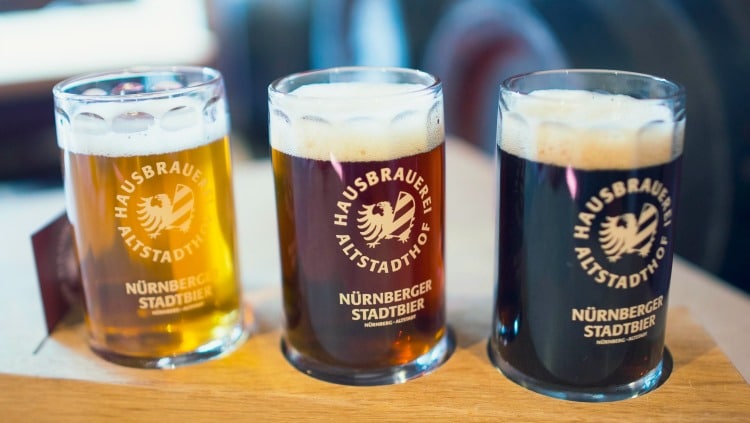
An Obligation to the Past
The National Socialists used the city’s legacy as “Germany’s little treasure chest” for their ideologies and from 1927 the Nazis held their party rallies here. The 1935 regulation which forbade relationships between Jews and Gentiles, and deprived the former of their citizenship, was called the “Nuremberg Race Laws“. Although most of the city was destroyed by bombing in January 1945, one structure which remained almost intact was the Palace of Justice and the adjacent prison. This made the city an ideal place to hold the judicial reappraisal of the Third Reich, the Nuremberg Trials (1946 – 1949).
Given the role that the city played during National Socialism era, Nuremberg today tries to do justice to its self-imposed commitment to be the “City of Peace and Human Rights”. Since 1995, the Nuremberg International Human Rights Award is awarded every two years.
Opened in 2001, the Documentation Centre on the former Nazi party rally grounds examines various historical aspects, including the rise of the NSDAP, the Hitler cult, the misuse of power, the party rallies and the Nuremberg Trials. Worth visiting is the courthouse where the trials were held (Court Room 600) which is still in use today. An exhibit details the background, progression and impact of the trials using film, photographs, audiotape, and even the original defendants’ dock.
[alert type=white]
Find Out More: www.bavaria.by
Also:
https://travelsquire.com/munich-and-bmw-welt/
https://travelsquire.com/bayreuth/
https://travelsquire.com/bavaria-germany-fussen/
https://travelsquire.com/bavaria-germany/
[/alert]

